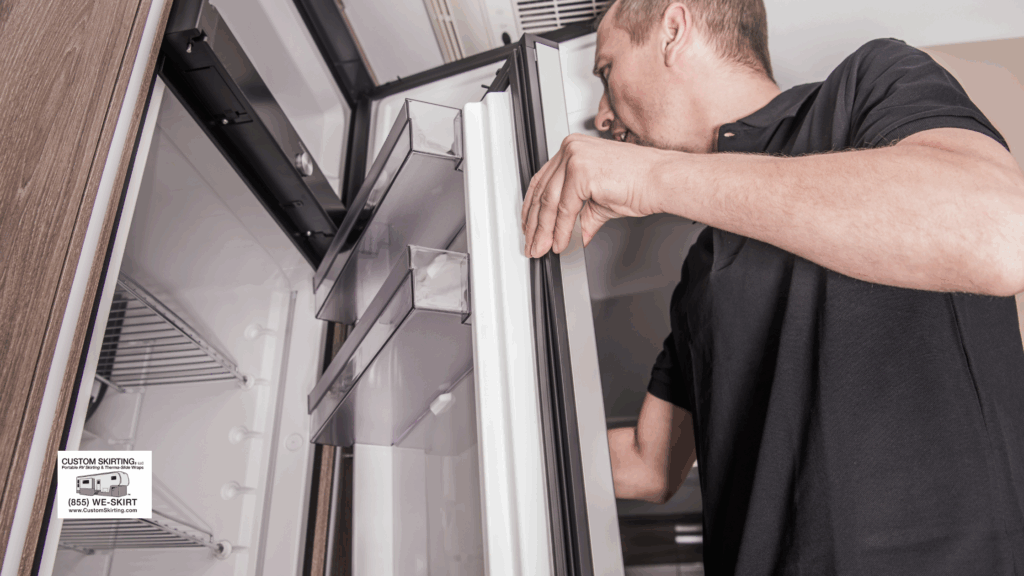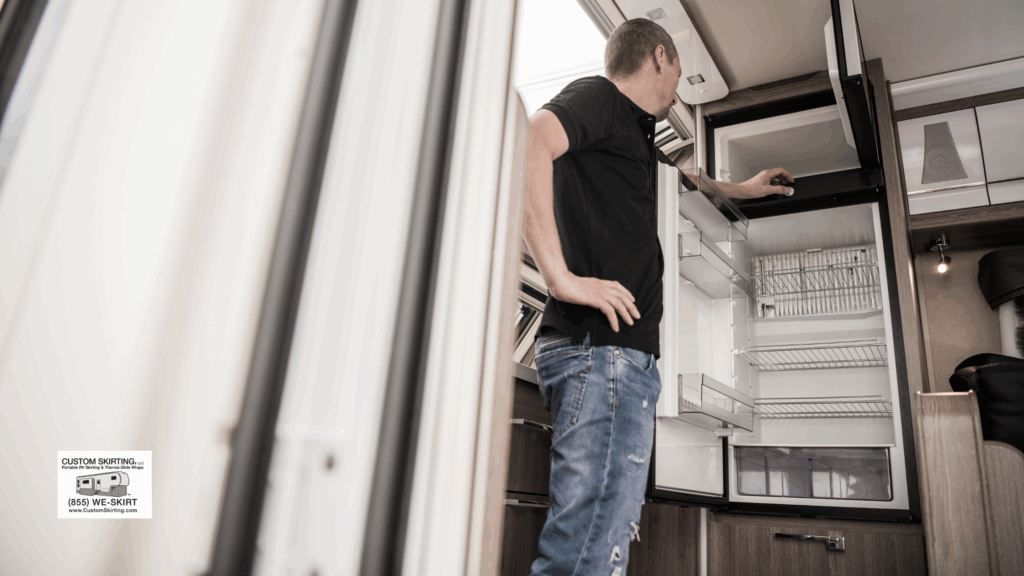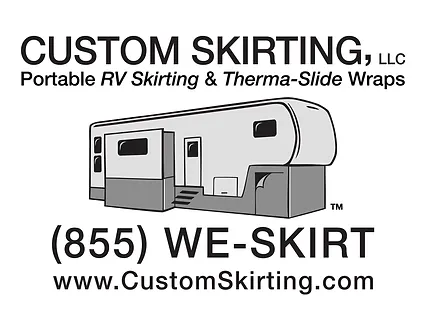
How Does an RV Refrigerator Work: Guide for RV Owners
Table of contents
Understanding how does an RV refrigerator work is crucial for anyone living or traveling in an RV. These appliances differ significantly from standard home refrigerators in how they function and the power sources they use. Whether you’re a full-time RVer or a weekend warrior, knowing how does an RV fridge work can help you troubleshoot issues, optimize performance, and make informed decisions when purchasing or upgrading your refrigerator. RV refrigerators are engineered for mobile environments and fall into three main categories: absorption refrigerators, compressor refrigerators, and residential refrigerators. In this article, we’ll explore how do RV refrigerators work, explain their differences, and offer practical tips for efficient operation and maintenance.
Types of RV Refrigerators
RV refrigerators come in different styles, each with unique operating mechanisms and benefits. Let’s explore the main types commonly found in recreational vehicles.
Absorption Refrigerators
Absorption refrigerators are the most traditional and widely used type in RVs. These units are designed specifically for mobile use and come in two-way (AC and propane) or three-way (AC, propane, and 12V DC) models. Their unique operation, which we’ll cover in detail later, involves using heat to drive the cooling process rather than a motorized compressor.
Compressor Refrigerators
Compressor refrigerators are becoming increasingly popular among RV owners due to their efficiency and reliability. Operating similarly to residential fridges, these units typically run on 12V DC power and are ideal for boondocking or solar-powered setups. They cool quickly and maintain stable temperatures, even on uneven terrain.
Residential Refrigerators
Larger or luxury RVs often come equipped with residential-style refrigerators. These models offer greater storage capacity and operate like the ones found in homes, usually requiring a 120V AC power supply. While they provide excellent performance and space, they may not be ideal for off-grid camping due to their high energy demands.
How Absorption Refrigerators Work

Since absorption refrigerators are the most common type in RVs, understanding how they work is essential.
The Absorption Cooling Process
The principle behind absorption refrigeration involves using heat to facilitate a chemical process. Heat from propane, AC electricity, or 12V DC power causes a solution of water and ammonia to boil in the generator. The resulting ammonia vapor then travels to the condenser where it cools and turns back into a liquid.
This liquid ammonia flows into the evaporator, where it absorbs heat from the refrigerator’s interior and evaporates again. The vapor returns to the absorber coil where it mixes with water, completing the cycle. This process, repeated continuously, removes heat and keeps the fridge’s interior cold without any moving parts.
Key Components
- Boiler/Generator: Heats the water-ammonia mixture to start the cooling cycle.
- Condenser: Cools ammonia vapor into liquid form.
- Evaporator: Absorbs heat from inside the fridge as the ammonia evaporates.
- Absorber Coil: Recombines ammonia gas with water to restart the cycle.
These components work together to create a consistent cooling cycle that efficiently preserves your food.
Power Sources
Absorption refrigerators can operate on multiple power sources:
- Propane: Ideal for off-grid use. A flame heats the ammonia-water solution.
- AC Electricity: Used when connected to shore power or a generator.
- 12V DC (Three-Way Models): Runs off the RV’s battery, but is less efficient and best used during driving.
Efficiency varies depending on the power source, with propane generally offering the best balance of energy consumption and cooling capability.
How Compressor Refrigerators Work
Now let’s look at how compressor-based models operate.
The Compression Cooling Process
Compressor refrigerators use a motorized compressor to pressurize a refrigerant gas. This gas travels through a condenser where it loses heat and turns into a liquid. It then flows through an expansion valve, cooling rapidly as it enters the evaporator. Here, it absorbs heat from inside the refrigerator and turns back into a gas, which returns to the compressor to restart the cycle.
This closed-loop system is efficient and reliable, making it a strong alternative to absorption refrigeration.
Power Requirements
Most compressor refrigerators in RVs run on 12V DC power, allowing them to operate directly from the RV’s battery system. They are ideal for solar setups and extended off-grid use, though they require sufficient battery capacity to function efficiently over time.
Advantages and Limitations
Advantages:
- Faster cooling times
- Consistent temperature regulation
- Less sensitive to being off-level
Limitations:
- Higher power consumption
- May produce noise during operation
Practical Considerations for RV Refrigerators

When using any type of RV refrigerator, several practical aspects affect performance.
Leveling Requirements
Absorption refrigerators must be level to operate efficiently. When tilted, the ammonia solution can’t circulate properly, which can lead to permanent damage. Generally, being within 3 degrees side-to-side and 6 degrees front-to-back is acceptable. Compressor models, however, can operate well even when the RV is parked on uneven terrain.
Temperature Management
Outside temperatures significantly influence RV refrigerator performance. In hot climates, interior cooling can struggle. To boost efficiency:
- Ensure proper ventilation behind the fridge
- Use auxiliary fans
- Avoid frequent door opening
In freezing conditions, pipes and cooling elements can be damaged. Insulate the fridge compartment and consider using a heating element if necessary.
Power Management Strategies
Efficient power use is vital, especially when boondocking:
- Monitor battery levels
- Use solar panels to supplement power
- Understand propane consumption rates
- Turn the fridge to a higher setting overnight to save energy during the day
Troubleshooting Common RV Refrigerator Issues
Even with proper maintenance, issues may arise. Here’s how to address them.
Cooling Performance Problems
If your RV refrigerator isn’t cooling well:
- Check for blocked ventilation
- Inspect the chimney for ammonia residue (a sign of leakage)
- Ensure the unit is level
- Verify power source functionality
Ammonia sediment buildup can also impair function. In such cases, professional servicing may be required.
Power Source Switching Issues
Problems may occur when switching between AC, propane, and DC power:
- Confirm settings on the control panel
- Check the circuit board for errors
- Ensure propane supply is active and pilot light is lit (for gas mode)
Manual models require user input to switch power sources, while automatic ones should detect and shift seamlessly—unless there’s a fault.
So, how does an RV refrigerator work? Whether you’re using a propane-fueled absorption fridge or a 12V compressor model, the mechanics behind your cooling system are key to a comfortable and successful RV experience. Understanding how does an RV fridge work, how does a RV refrigerator work, and how does RV refrigerator work empowers you to troubleshoot issues, enhance efficiency, and choose the right appliance for your travel lifestyle. With this knowledge, you’re well-equipped to make the most of your RV kitchen on every adventure.
Take Control of Your RV’s Climate—Pair Smart Fridge Use with Custom Skirting
Now that you understand how does an RV fridge work, it’s time to think about optimizing your entire temperature control system—starting from the ground up. Custom RV skirting can dramatically improve insulation, reduce power strain on your refrigerator, and keep your rig comfortable year-round.
With the Nation’s #1 RV skirting solution, you get more than just protection—you get peace of mind. Our custom-tailored skirting is blueprint-measured and installed on-site for a perfect fit, using our exclusive “No-Snap, No-Gap” channel system to seal out snow, wind, and moisture better than any competitor. Battle-tested in the harshest climates across North America, it’s the ultimate upgrade for RV owners serious about efficiency and comfort.
Don’t let extreme temps work against your RV fridge—invest in Custom Skirting today and adventure with confidence.
